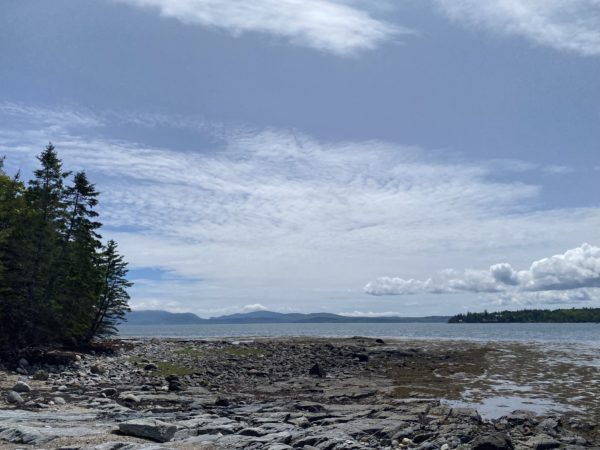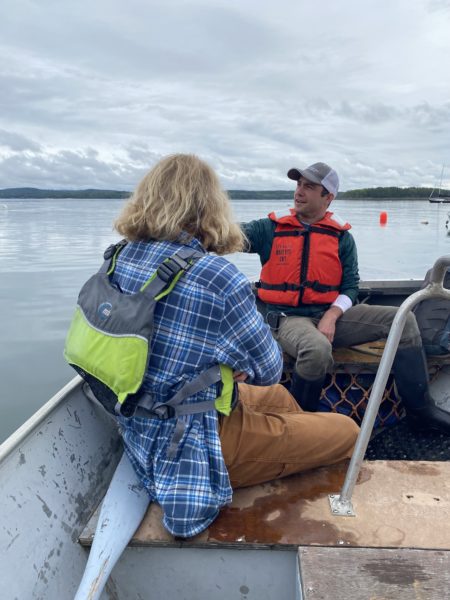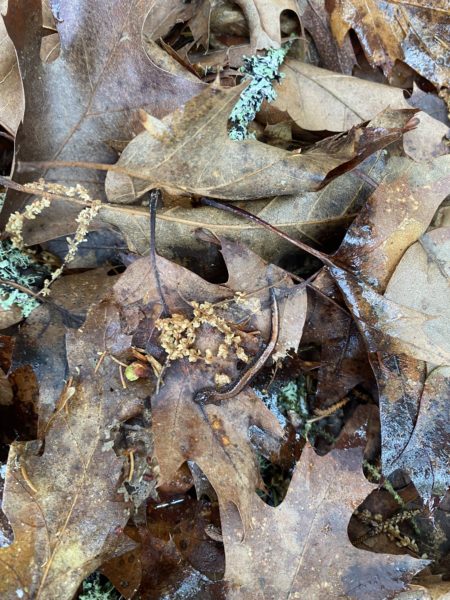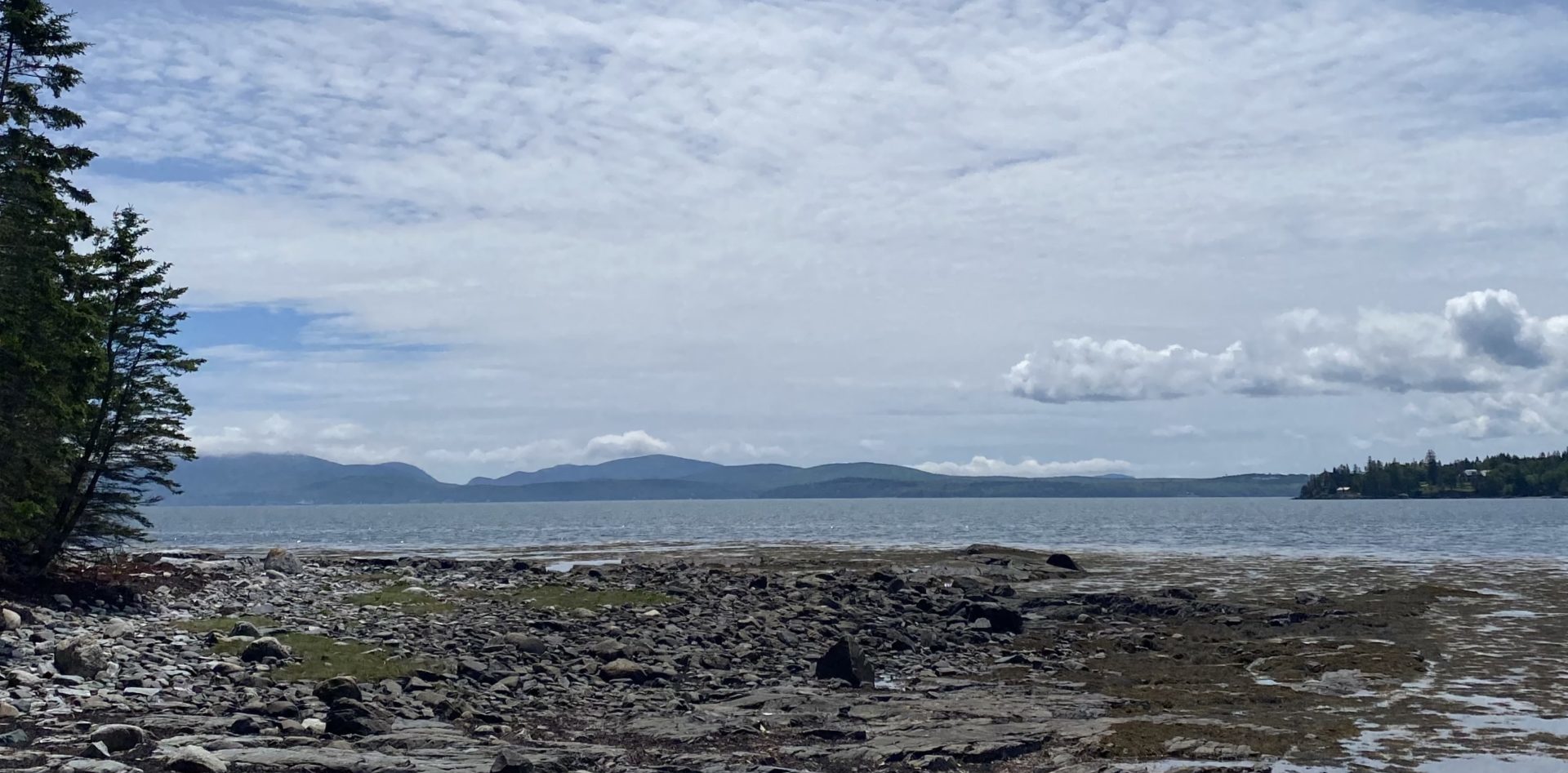A Voyage to a Little-Known Jewel of Frenchman Bay

Sorrento, ME– When one hears the name “Frenchman Bay Conservancy”, it is hard not to think of the body of water for which it’s named. Bound by the peaks of Mount Desert Island, the Schoodic Peninsula and the jagged fingers of the Mount Desert Narrows, there are few places on the coast that can rival its majesty. Yet of all the organization’s preserves, only one can be found within the waters of the bay itself. A microcosm of Maine’s Downeast, the 27-acre Bean Island Preserve features hiking trails, dense forests, cobblestone beaches, and breathtaking views of Acadia–all accessible to those with an adventurous heart and a kayak or two.
Who Am I?
I’ll take a moment here for a brief introduction: my name is Michael Monaco-Vavrik, and I’m the 2023 Outreach and Education Intern for the Frenchman Bay Conservancy. I’ll be using this summer as an opportunity to visit many of the FBC’s preserves and share a bit of my casual first-hand experiences. These may cover topics ranging from flora to fauna to history to general thoughts. I hope these pieces may encourage some of you to go out and experience these preserves yourself.

FBC Seasonal Land Stewards, Garrett and Sam, on the boat headed to Bean Island.
I was brought to Bean Island this past week not by pleasure, but by work–if you can call an afternoon on a beautiful Maine island “work”. Summer is approaching (so I’m told, at least) and our tasks were straightforward: clearing downed trees, removing invasive plants, doing some renovations around the one campsite.* But, truth be told, that took a backseat to the simple opportunity of visiting the preserve.
*The Bean Island campsite is a part of the Maine Island Trail Association (MITA) Maine Island Trail, and they helped to organize the trip, along with providing boat transportation to the island. Camping is permitted for two-night stays with prior permission from FBC.
Bean Island: A History
Now let’s talk a bit about the history of Bean Island, and, by extension, the history of Maine’s islands. With a long, broken coastline, it’s unsurprising that the state has a lot of them. Ranging in size from small barren rocks to the massive Mount Desert, these represent some of the most unique ecologies in the northeast. Forests, heathland, puffin colonies–we’ve got them all. But these islands’ human histories are often just as rich–and environmentally impactful. The birchbark canoes of the Wabanaki peoples have plied the waters of the gulf for thousands of years, hunting for fish and seals and bird eggs. Then came the European colonists to claim the coast with brute force and destruction. These colonists used these islands for lumber, for quarried granite, and, more often than not, animal grazing.
And Bean Island was no exception.
Looking at old maps and documents, one can get a somewhat general view of the island’s history. Eastern Maine was ceded to the United States from Britain in 1783 (prior to this, the region was part of Nova Scotia, and before that, the French colony of Acadia). This “new” American land was then parceled off to former soldiers and eager would-be landowners. In the case of the then-unnamed Bean Island, it was sold to one John Bean in the year 1786. It then passed through a number of different owners until 1911, when it was purchased by the Hayward family. After several decades of sheep grazing it was put under easement with Acadia National Park, and then donated to the Frenchman Bay Conservancy. Now dense with forest, there was a point in recent history where only one single tree remained; it’s a keystone example of both how quickly nature can reclaim altered land and how relatively young our forests are.
Bean Island: An Experience

Can you spot the salamander? Found along the trail’s leaf litter, an Eastern Red-backed Salamander (Plethodon cinereus).
But let me get back on track here. What most struck me when first gazing out from Bean Island’s mosaic shore was the sheer scale of everything. The Downeast is spectacular to visit, but only from the water you truly take in the splendor of it all: towering glaciated peaks, breaching silhouettes of pine-laden hills, the granite scars of the coast, endless azure expanse as far as the eye can see. It’s an experience that can only be described as humbling. And, then, turning from the coast to the interior, you realize that there’s an entire world spread across this wave-beaten isle. Little things begin to catch in your mind. The gentle humidity of the living wood, warm and comforting. The caress of pine needles on your neck as you trek past. The architecture of spruce and cedar and fir: living, dying, intertwining, shaping the very earth with their wandering roots. Bean Island’s trail delights equally in coastal stretches and forest footpaths, and it tempts you to return and explore its mysteries. Following the shore is equally exciting, and you may even spot the skeleton of a wooden ship–a lobster boat that once drifted from its mooring. And, with Bean Island only accessible by kayak or motor boat, the experience of getting to the island feels rewarding in itself. It truly is a modern day adventure perfect for anyone. If you have an afternoon, a boat, and a love of nature, this is one preserve not to miss.
Learn more about the preserve, and how to get there, here.
